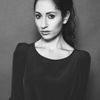
My co-author and I have had a busy couple of weeks. The Centre for Literacy and Primary Education recently released a report revealing that just 1% of the 9,115 children’s books published in 2017 featured a main character from a black or minority ethnic background. And it just so happens that our new children’s book does. So we’ve been talking about it a lot. Which I suppose isn’t surprising given the pool - despite the fact that nearly a third of all primary school-age children are non-white, only 4% of 2017’s books included any BAME characters at all.
Clearly, this is an unhappy statistic, and something we’re eager to address. Books, and especially children’s books, are a key to imagination – not only about the magical and miraculous, but also about what our lives can hold beyond the small scope of what we know. When we see ourselves in the characters we read, there bubbles the first nugget of possibility – might I also act this way, might I do that, might I achieve that yet-unthought-of thing? For years, for exactly this reason, we have fought for better female characters in the hopes that our girls may dream of more than becoming passive princesses, and at last, steps are being made here. It is vital that the debate has begun about BAME characters too.
However, I have noticed over the past weeks that despite hailing from a minority background myself – Jewish - it is my co-author’s British Indian voice that has leant us the credibility to talk. We created the book together, but only she can speak about this aspect of it alone. It’s something I’ve been mulling, and it reminded me of some of the questions I’ve been asked in previous interviews about my adult fiction. All of my novels so far have included characters from minority ethnic backgrounds. They have also included characters who are drug addicts, or cancer patients, or war veterans, or men – myriad experiences foreign to my own. Yet these are never the fascination. I do not get asked about the leap of consciousness it takes to inhabit these worlds. I do get asked how I could write a black Rwandan character, or a British Muslim character. The insinuation often being that I perhaps do not have the right, that these are not my stories to tell.
I have always found this a difficult one. Because of course I am aware of the sensitivities around race and religion (we Jews talk about this stuff a lot). But if writers limited themselves to drawing only from their own experiences, we’d have very few stories to tell. The challenge, and excitement, is in being able to imagine - to transport both ourselves and our readers to other worlds. For me, this is usually the result of extensive research, including long interviews with those who have the insights I lack. Authenticity is crucial, always, so finding out about the traditions, beliefs or experiences of a person from a different ethnic or religious background, feels not so different to researching other things foreign – a divorce, an abusive home, what it’s like to crest a mountain.
Yet time and again we see not only writers, but all manner of artists and celebrities being criticised for supposedly appropriating a culture that isn’t theirs, that doesn’t belong to them. Scarlett Johansson for example was recently shouted out of a role as a transgender man; Israel’s Eurovision winner Netta was accused of stealing Japanese motifs; and Kim Kardashian is not allowed to wear her hair in braids. There are of course perfectly valid reasons for defensiveness around all of these areas. But if we erect barriers by insisting we are the only ones entitled to represent, understand or explore our specific culture, then we are doing the opposite of what diversity hopes to achieve. We are excluding. We are setting ourselves up as the “other”.
And what a mishegoss is that.
I of course use the Yiddish for “craziness” here to illustrate the reverse – how exposure to other cultures enables us to feel familiar with it, to have some understanding of it, to allow it to infiltrate and mix with our own.
This is important, because the need for more diversity in literature is two-fold: yes, to give children from BAME backgrounds the chance to recognise themselves in the stories they read, and gain all the crucial benefits to both the sense of self and imagination for oneself that comes from it; but also, to expose children who are not from such backgrounds, to them, so that they stop seeming strange or other.
According to the CLPE report, in over half of the books in which BAME characters do feature, they do so in the context of war, immigration and racism. (I can’t actually think of a Jewish children’s character that is not within a Holocaust story.) These issues are of course important to explore. But we must also see such characters in normal, mainstream settings, experiencing all the same emotions and adventures that other children’s characters face. Because in truth, most stories are universal, and there is always far more in our common humanity to unite us, than to divide.
BAME authors have a huge amount to bring to the table here. A look at 2018’s Women’s Prize shortlist shows only the tip of how impactful they already are. But it is not their job alone. If we really want to fill our pages with diverse voices, then it is all authors, and not just the few, who we must encourage to do this, and who we must give license to do this. No writer is afraid to imagine, so perhaps it’s time to shun that old maxim of “write what you know”.
